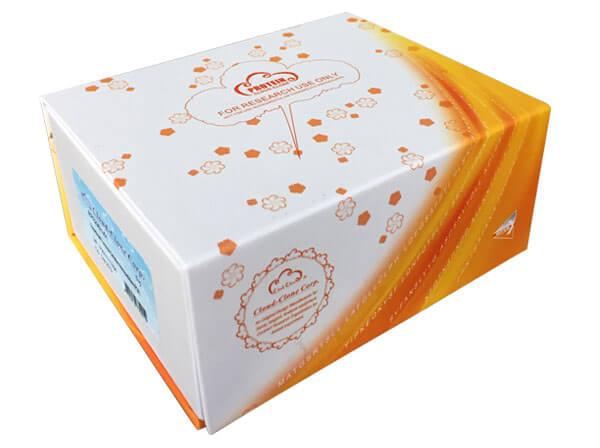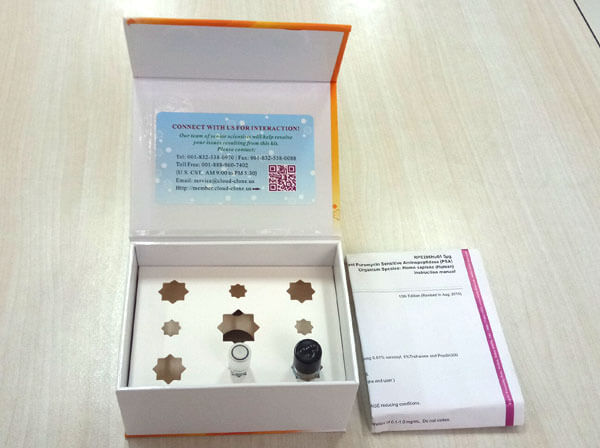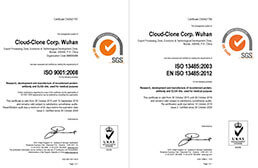Recombinant Small Nuclear Ribonucleoprotein Polypeptide F (SNRPF)
Référence RPD918Hu01-100ug
Conditionnement : 100ug
Marque : USCN
Recombinant Small Nuclear Ribonucleoprotein Polypeptide F (SNRPF)
SMF; Sm-F; SNRP-F
- Product No.RPD918Hu01
- Organism SpeciesHomo sapiens (Human) Same name, Different species.
- SourceProkaryotic expression
- HostE.coli
- Endotoxin Level<1.0EU per 1µg (determined by the LAL method)
- Subcellular LocationPlasma, Nucleus, Cytoplasm
- Predicted Molecular Mass13.3kDa
- Accurate Molecular Mass15kDa(Analysis of differences refer to the manual)
- Residues & TagsSer2~Glu86 with N-terminal His Tag
- Buffer FormulationPBS, pH7.4, containing 0.01% SKL, 5% Trehalose.
- TraitsFreeze-dried powder
- Purity> 90%
- Isoelectric Point4.6
- Applications Positive Control; Immunogen; SDS-PAGE; WB.
If bio-activity of the protein is needed, please check active protein. - Download Instruction Manual
- UOM 10µg50µg 200µg 1mg 5mg
SEQUENCE of the Recombinant Small Nuclear Ribonucleoprotein Polypeptide F (SNRPF)

USAGE of the Recombinant Small Nuclear Ribonucleoprotein Polypeptide F (SNRPF)
Reconstitute in 10mM PBS (pH7.4) to a concentration of 0.1-1.0 mg/mL. Do not vortex.
STORAGE of the Recombinant Small Nuclear Ribonucleoprotein Polypeptide F (SNRPF)
Avoid repeated freeze/thaw cycles. Store at 2-8°C for one month. Aliquot and store at -80°C for 12 months.
STABILITY of the Recombinant Small Nuclear Ribonucleoprotein Polypeptide F (SNRPF)
The thermal stability is described by the loss rate. The loss rate was determined by accelerated thermal degradation test, that is, incubate the protein at 37°C for 48h, and no obvious degradation and precipitation were observed. The loss rate is less than 5% within the expiration date under appropriate storage condition.







